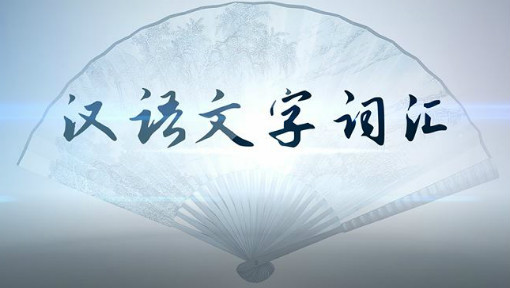
当前课程知识点:生理与遗传学基础 > 7. Genetics 遗传 > 7.2 DNA Replication DNA复制 > Video material
The urinary system, also known as the renal system, produces, stores and eliminates urine, the fluid waste excreted by the kidneys. The kidneys make urine by filtering wastes and extra water from blood. Urine travels from the kidneys through two thin tubes called ureters and fills the bladder. When the bladder is full, a person urinates through the urethra to eliminate the waste.
The urinary system is susceptible to a variety of infections and other problems, including blockages and injuries. These can be treated by a urologist or another health care professional who specializes in the renal system.
The urinary system works with the lungs, skin and intestines to maintain the balance of chemicals and water in the body. Adults eliminate about 27 to 68 fluid ounces (800 to 2,000 milliliters) per day based on typical daily fluid intake of 68 ounces (2 liters), National Institutes of Health (NIH). Other factors in urinary system function include fluid lost through perspiring and breathing. In addition, certain types of medications, such as diuretics that are sometimes used to treat high blood pressure, can also affect the amount of urine a person produces and eliminates. Some beverages, such as coffee and alcohol, can also cause increased urination in some people.
The primary organs of the urinary system are the kidneys, which are bean-shaped organs that are located just below the rib cage in the middle of the back. The kidneys remove urea — waste product formed by the breakdown of proteins — from the blood through small filtering units called nephrons, according to the Cleveland Clinic. Each nephron consists of a ball formed of small blood capillaries, called a glomerulus, and a small tube called a renal tubule. Urea, together with water and other waste substances, forms the urine as it passes through the nephrons and down the renal tubules of the kidney.
From the kidneys, urine travels down two thin tubes, called ureters, to the bladder. The ureters are about 8 to 10 inches long (20 to 25 centimeters), according to the Cleveland Clinic.
Muscles in the ureter walls continuously tighten and relax to force urine away from the kidneys, according to the NIH. A backup of urine can cause a kidney infection. Small amounts of urine are emptied into the bladder from the ureters about every 10 to 15 seconds.
The bladder is a hollow, balloon-shaped organ that is located in the pelvis. It is held in place by ligaments attached to other organs and the pelvic bones, according to the Kidney & Urology Foundation of America. The bladder stores urine until the brain signals the bladder that the person is ready to empty it. A normal, healthy bladder can hold up to 16 ounces (almost half a liter) of urine comfortably for two to five hours.
To prevent leakage, circular muscles called sphincters close tightly around the opening of the bladder into the urethra, the tube that allows urine to pass outside the body. The only difference between the female and male urinary system is the length of the urethra, according to Merck Manuals. In females, the urethra is about 1.5 to 2 inches long (3.8 to 5.1 cm) and sits between the clitoris and the vagina. In males, it is about 8 inches (20 cm) long, runs the length of the penis and opens at the end of the penis. The male urethra is used to eliminate urine as well as semen during ejaculation.
-How to learn in this course/如何学习本门课程
-Introduction /简介
--Intro video from overseas/国外简介视频
-1.概述
-1.1 Cell Structure 细胞结构
--1.1.4 细胞结构_课后练习
-1.2 Cell Transport 细胞的物质转运
--1.2.4 细胞的物质转运_课后练习
-1.3 Cell Signal Transduction 细胞的信息转导
--1.3.4 细胞的信号转导_课后练习
-1.4 Cell Bio-electricity 细胞生物电
--1.4.2 细胞生物电_课后练习
-1.5 Cell and Tissue 细胞与组织
--1.5.4 细胞与组织_课后练习
-1.6 Musculoskeletal System 肌肉骨胳系统
--1.6.1 Skeletal System 骨骼系统_视频
--1.6.2 Skeletal System 骨骼系统_趣味视频
--1.6.3 Skeletal System 骨骼系统_PPT
-2.1 Neuron Communication 神经元信息传递
--2.1.4 神经元信息传递_课后练习
-2.2 Function of Nervous System 神经系统功能
--2.2.4 神经系统功能_课后练习
-2.3 Structure of Nervous System 神经系统结构
--2.3.3 神经系统结构_课后练习
-2.4 Brain Structure 大脑结构
--2.4.2 补充视频_脑/The Brain (In English)
--2.4.3 大脑结构_课后练习
--语言中枢
-3.1 Blood 血液
--3.1.3 血液_课后练习
-3.2 Electric System of Heart 心肌生物电
--Homework
-3.3 Cardiac Circle 心动周期
--3.3.2 心动周期_课后练习
-PPT
-4.1 Endocrine and Hormones 内分泌与荷尔蒙
--Homework
--4.1.3 内分泌与荷尔蒙_课后练习2
-4.2 Reproductive system 生殖系统
--Video:Female reproductive system
-Functions and Components/功能与组成
--Introduction to respiratory system
--Respiratory system_function and components
-5.1 Vision 视觉
--5.1.2 视觉_课后练习
-5.2 Hearing 听觉
--5.2.2 听觉_课后练习
-6.1 Chemical Elements 化学元素
--Homework
-6.2 Carbon and Versatility 碳与分子多样性
--6.2.2 碳与分子多样性_课后练习
-6.3 Macromolecules 生物大分子
--Homework
-7.1 DNA
--Genes/基因
--7.1.2 DNA_课后练习
-7.2 DNA Replication DNA复制
--7.2.2 DNA复制_课后练习


